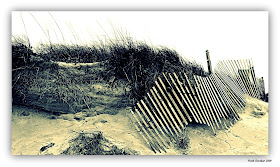Yoda, the Matrix, Spiderman, and Batman. Why has our popular culture become so permeated with the quest for super powerful heroes? Do our subconscious imaginations know something our conscious minds don’t? The Dark Side and the Light. Can Pop Culture predict the future? Does the truth about the future of humanity lie hidden in the epic struggles of comic book heroes or in Super Hero Movie blockbusters? Is there a Secret to Life?
I ask because its essence has infused our culture, producing a yearning for something more powerful, more liberating. Since the 1940s, Hollywood has featured movies in which people:
Come back from the dead to instruct the living (Ghost, Heaven Can Wait);
Have guardian angels (It’s a Wonderful Life, Topper, Here Comes Mr. Jordan, The Bishop’s Wife);
Acquire super magical powers (Star Wars, Superman, The Matrix, X-Men).
 |
| Ghost (1990), starring Whoopi Goldberg, Demi Moore, Patrick Swayze |
If they do it in the movies, if it’s seeped into our consciousness to such an extent, surely there must be something to it. Doesn’t fiction usually foretell reality? Is not actuality rooted in dreams? If there’s nothing to it, then why has so much time and money been spent stimulating our imagination? Why do we spend so much time on stories and fables about the acquisition of extraordinary faculties? Quite simply, because there’s a large body of experience in fact and fiction built up around the acquisition of such faculties.
We shouldn’t be indignant with Hollywood. The purveyors of dreams — pop culture trendsetters and advertising wags, writers and storytellers — are merely channeling the phenomenon of unconscious or collective yearning. What is unconscious yearning?
Unconsciously, we have always yearned for higher states. Our Popular Culture has given us Avatars to aspire to: Batman, Superman, The Hulk, Wonder Woman, Captain Marvel, Daredevil, Spiderman. Heck, Robert Louis Stevenson's best-selling work, Strange Case of Dr. Jekyll and Mr. Hyde (1886), was little more than a veiled Kundalini awakening gone awry.
Eventually, we will morph into more spirit-based beings. What will this entail? Well, in the first place let’s look at where we’ve come from. Only in this way can we understand where we’re going. Evolution has allowed us to dominate our planet. To do this, we needed raw emotional power, a type of behavioral nature that could not be deterred by any threat to our survival. Immediate survival was the role of the Reptilian brain that psychologists and anthropologists often talk about. Once on the road to dominance, a Mammalian brain was added. This evolutionary adjustment added an emotional component — a capability that allowed our species to develop a strong sense of identity based on simple emotions such as, surprise, fear, anger, sadness, joy and more developed emotions like, remorse, awe, pride, optimism, shame, guilt, love.
Now, to evolve to the next stage of being do we need such powerful emotions? Can we survive in world with less need for aggression and less space per individual owning, as part of our being, emotional states that frequently lead to trouble: wars, family breakdown, addiction, crime, greed, hate crimes? Emotions that many times — more often than not — lead us to make the wrong decision.
Perhaps pop culture, as it relates to the eventual metamorphosis of our species, can shed some light on the subject. I say eventual because it’s not for today. But, if and when it comes, what form will it take?
To illustrate the form this new human being might take, I’ll break down a Pop Culture icon and show how, beneath its many layers of metaphor it contains hidden patterns of unconscious yearning. This icon is none other than Don Siegel’s 1956 masterpiece, Invasion of the Body Snatchers, starring Kevin McCarthy and Dana Wynter.
 |
| Invasion of the Body Snatchers (1956) |
This review from the Internet Movie Database (IMDb) by Brandt Sponseller sums up several of the film’s allegorical levels. “Much has been said about the parallels between Invasion of the Body Snatchers and the ‘communist paranoia’ in the United States in the late 1940s and early 1950s, especially as it was directed against Hollywood by the House Un-American Activities Committee. However, there is another very interesting subtext present that isn't often mentioned. The film can also be looked at as a philosophical exploration of personal identity. Just what does it take for people to be themselves? Is it how they look, act, the things they say? Is it not the case that people are constantly transformed into something they weren't just hours ago, or even moments ago? Among the many ways that these kinds of ideas are worked into the script is that sleep is a metaphor for unconscious physical change over time. It would be easy to analyze each scene in the film in this manner, going into detail about the various implications each plot development has on the matter of personal identity.”
Reading this review, I couldn’t help thinking about the common phrase: “He wasn’t himself.” A phrase often applied to persons who are losing emotional control. I don’t know if that’s the direction the author of this review was going in, but control of emotion is really the underlying theme of this movie. Except for human emotion, the original being and its Pod counterpart are alike in every way. Unbeknownst to the screenwriters, who may have thought they were making some sort of statement about Communist witch hunting, the real and hidden theme of the film is a change in being based on mass Kundalini awakening. The next great leap forward in human evolution.
I know this goes against everything you’ve ever heard of or thought about this film. It goes against our revulsion and fear of the Pod People, and our inherent tendency to side with the good guys, who in this case, are us, even though there are no superficial differences between the characters in their Original or Pod avatars. To us, our emotions, our ability to feel love especially, is the single attribute that sets us apart from them, that makes us “right” and them “wrong”. At least, that’s what the authors would have the characters believe, and through them, us. In one scene, the doctor, played by Larry Gates, explains this to Miles and Becky, who are so terrified at the thought of being stripped of their humanity, they can’t even listen. They don’t know Kundalini from nothing. That’s because the authors didn’t either. But unconsciously they took us far beyond Communist conspiracy and McCarthyism. They didn’t know it but they were describing the next stage of human evolution, one where humans, if we are to survive, will no longer need to express emotion in the wanton, destructive ways we do.
Let’s step back for a moment and reflect on the psychology of the screenwriter’s creative process. Since the inspiration comes from the author’s subconscious, it’s reasonable to believe that he had no conscious awareness of the deeper layers of meaning. In the case of Invasion of the Body Snatchers, it’s probable that the author wasn’t knowingly aware of the symbolism of a Kundalini awakening, especially if he was preoccupied with the subtextual theme of McCarthyism. Yet, the story has all the earmarks of this experience, at least in allegorical terms. People who fall asleep, only to awaken as new beings that are superior to the old. New beings that threaten the old order because of their superiority. Their superior emotional control, capacity to cooperate, to communicate, to get along, resistance to illness, longevity. The Pod represents the awakening process, the slow formation of the more perfect being, and the results are clearly superior beings.
Resistance, however, is hysterical, even illogical. The author is saying that in spite of the fact that the transformation process is painless and produces a superior being, we should be afraid of it. Why? Because our emotions make us “human.” No mention is made of the destructive power of our emotions. In spite of the fact that today our emotions get in the way of just about everything we need to accomplish.
So, am I saying that we will not succeed as a species unless we can learn to govern our emotions? Up to the industrial revolution we needed powerful emotions to extend our "perceived" dominance over nature. Now we are moving in another direction. In the film, one of the characters talks about emotion as one of the elements that makes us human, that without it, we would not be human. Who knows what it is to be human? We don’t even know when we became human. That we came from the mud, evolved from lower forms is certain, but when did we become human and who’s to say that human being of today shall not evolve into further avatars with even greater powers of awareness? Is our evolution finished? Is our brain incapable of adding entirely new nodes — as it did long ago when it added the neocortex?
These Avatars spring from the depths of our creative imagination, even to the point of laying out a blueprint, in storyboard form, for our transition to a new state of being. That the blueprint should be interpreted by the viewer’s subconscious as something fearful is only normal. Evolution does not come easy. As Mikhail Turovsky said, “The first ape who became a man thus committed treason against his own kind.”
In neuro-biological terms human potential is limitless and our subconscious mind knows it. Where does the subconscious mind get its information? From time to time, the Kundalini, dormant in most of us, nudges our subconscious. Some of these contents come to us in the form of dreams and inspirations of various sorts. In men of genius, it endows them with extraordinary creative powers. These contents are not mere figments, but the signs of a deeper reality, one constantly beckoning to us to push the boundaries of consciousness, what Gopi Krishna called the Evolutionary Impulse.












